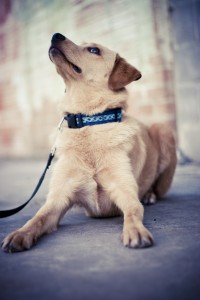Michael Baugh, CPDT-KA, CDBC
Give this a try when you’re training your dog. Leave room for him to make mistakes. Experimenting with failing can actually help your dog learn. It also leads to more creative thinking.
The classic example is the dog who jumps up to greet you. Lots of trainers recommend turning your back and ignoring the dog. That very clearly teaches the dog what doesn’t work. Jumping doesn’t earn him any attention. That’s half the equation, though. You’ll notice that most dogs will experiment with an alternate behavior. Some will run get a toy and bring it to you. Others might try offering you a “sit.” Pretty much all of them will at least put all four paws back on the ground, if for no other reason than to take a rest. Perfect! Let your dog know that does work for him. Shower him with calm gentle praise, or maybe even a nice bit of food if you have it handy. He is learning. In fact, he employed his own “doggie creativity” and tried out a new behavior other than jumping, and it worked.
There’s an added side effect that comes along with this newfound freedom. Your dog will be more likely to watch you for feedback when he tries new behavior. Does this work? What about this? That tightens your bond with your dog and enhances your relationship. The most striking example of this approach is the Karen Pryor training game, 101 things to do with a box. It requires creative thinking and allows plenty of room for low-stress failure. Peta Clarke, a wild animal trainer in Australia, also demonstrates vividly how this works with fearful animals in her short video, The Power of Choice. I also have a short video of Stellla learning “down” using this free approach.
Of course, there are some behavior problems that require we give our dogs more active direction. We wouldn’t, for example, let our dog pee everywhere until he finds the right spot and earns our praise. That would be silly. Sometimes, though, it’s exactly the right approach. Let your dog learn to fail, then learn to win. Wait until you see just how creative he can get, and just how fun training can be.
(originally published in Houston Dog Blog)

